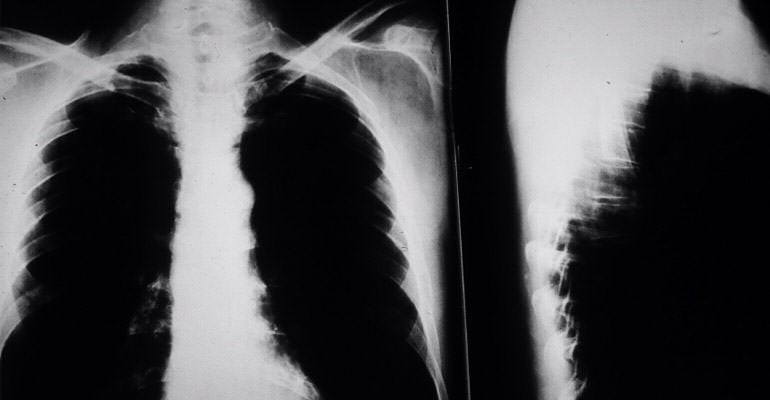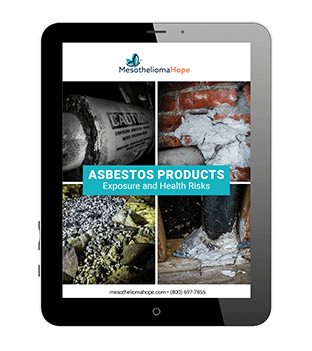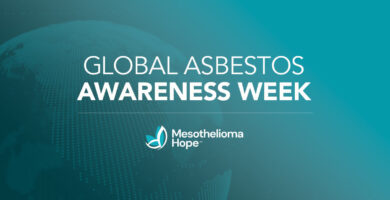Mesothelioma is a rare form of cancer that attacks the lining of the lungs, chest, abdomen, and heart.
Doctors in the U.S. diagnose around 3,000 cases of mesothelioma every year, and that number is rising. There is only one known cause for this aggressive and fatal disease: exposure to asbestos.
What Is Asbestos?
Asbestos is a naturally-occurring mineral with thin fibrous crystals.
For centuries, humans noticed its flame-resistant and insulating properties, but large-scale mining did not begin until the end of the 19th century when manufacturers began using it for insulated wiring, heat-resistant clothing, building insulation, and other commercial and industrial products.
Use of asbestos rose throughout the 20th century, despite concerns regarding its effects on the respiratory system. Eventually, laws limiting the use of asbestos passed in the 1980s and 90s.
The U.S. remains one of the few developed countries not to have banned asbestos outright, and asbestos can still be found in products such as vinyl floor tiles, pipeline wrap, cement pipes, brake pads, and many others.
Who Is Exposed to Asbestos?
An estimated 1.3 million U.S. workers are exposed to asbestos annually. Those who work directly with asbestos are at the highest risk for mesothelioma and other asbestos-related diseases, especially construction workers and engineers.
The industries traditionally affected are:
- Construction
- Shipbuilding
- Manufacturing of asbestos textiles
- Automobile production and maintenance
Metal plate workers (especially in shipbuilding), carpenters, plumbers, and mechanics are also at high risk.
Because asbestos still lurks in many older buildings, particles of this deadly mineral can easily be released during demolition and renovation projects, as many buildings were built with asbestos-containing insulation, floor tile, piping, and drywall.
Today’s federal laws regulate workplace practices to reduce the likelihood of asbestos-related illnesses for demolition workers and drywall removers exposed to asbestos.
The risk of mesothelioma also increases for people with secondary exposure to asbestos, such as household members of industrial workers who can carry the dust home on their clothing and hair.
Cases of mesothelioma have also been found among people living near asbestos mines even if they had no occupational exposure to asbestos.
How Does Mesothelioma Develop?
If an asbestos fiber is inhaled or swallowed during exposure, it can become lodged in a person’s mesothelium, a lining that protects the lungs and other internal organs.
3 out of 4 cases of mesothelioma begin in the pleural mesothelium surrounding the lungs, but it can also begin in the abdominal cavity or around the heart.
When asbestos fibers are embedded, it first causes inflammation and irritation of the surrounding area, leaving permanent scarring and cellular damage.
Like other cancers, mesothelioma occurs when there is damage to a cell’s DNA. DNA contains genes that control all of a cell’s functions, such as when it should grow, divide into new cells, or die. Each cell in the human body contains genes that guard against cancer.
One of the body’s cancer safeguards is apoptosis, which is the mechanism by which cells are programmed to die if their DNA becomes damaged.
After exposure to asbestos, cells in the mesothelium undergo genetic mutations that prevent apoptosis. Bypassing apoptosis is considered one of the hallmarks of cancer cells.
Once it occurs, cells with damaged DNA can grow uncontrollably, forming tumors or metastasizing to other parts of the body.
What Is the Progression of Mesothelioma?
Mesothelioma is an aggressive and fatal cancer, however, symptoms typically do not appear until 20 to 50 years after exposure to asbestos.
Because early symptoms of mesothelioma are similar to the flu, the cancer is often not even diagnosed until it is in a late stage.
Treatment options include surgery, radiation therapy, and chemotherapy, but mesothelioma is difficult to remove completely. This is because the cancer does not grow as a single tumor mass but spreads to nearby surfaces, nerves, and blood vessels.
In as many as 82% of patients, the cancer will be metastasized, most often to the liver, adrenal gland, or opposite lung.
For some patients, palliative care might be used to help treat the symptoms of mesothelioma, either instead of or alongside other treatments.










